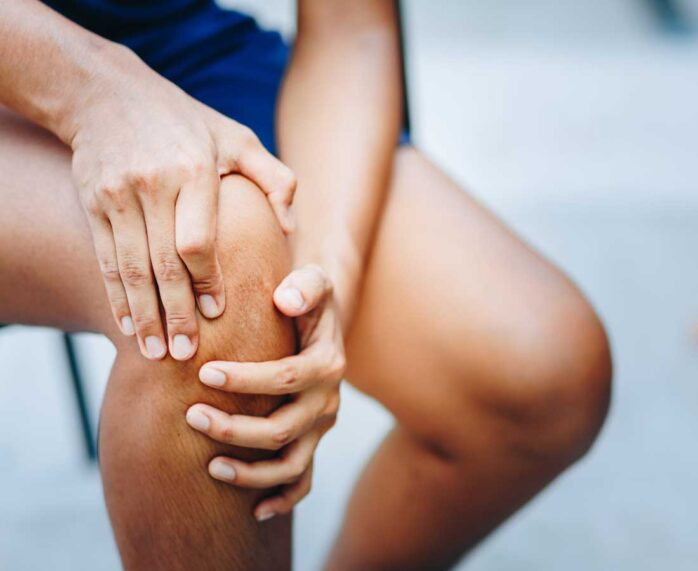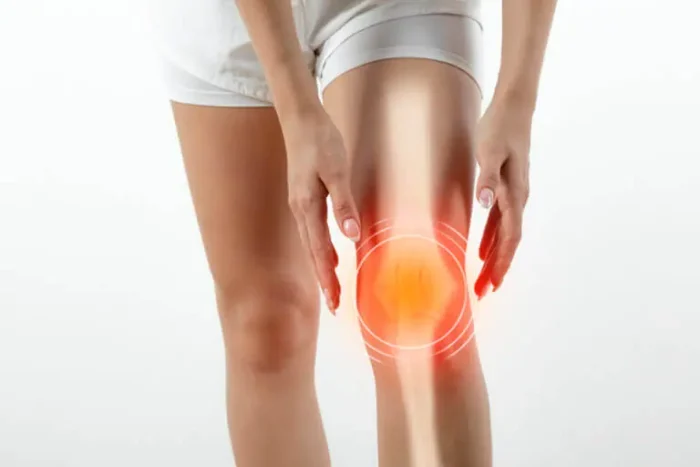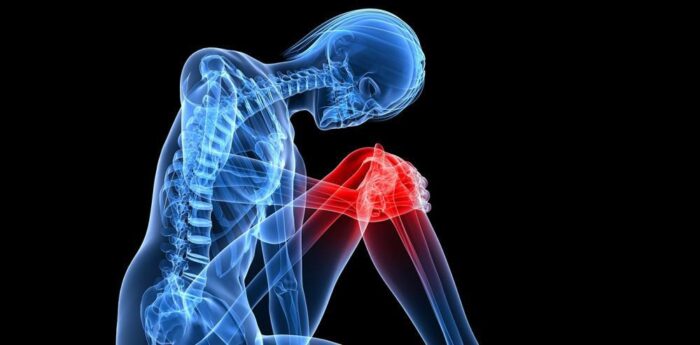
Joint health refers to the overall health and function of the joints in the body. Joints are the connections between bones, and they allow for movement and flexibility. Maintaining good joint health is important for overall mobility and quality of life. When joints are healthy, they are able to move smoothly and without pain or discomfort. However, when joints are compromised, it can lead to joint pain, stiffness, swelling, and limited range of motion.
Factors such as aging, injury, obesity, and certain medical conditions can all contribute to poorly functioning joints. It is important to take steps to maintain joint health throughout life, including regular exercise, a balanced diet, and avoiding repetitive motions or overuse injuries.

How Joint Health Helps
It plays an important role in overall mobility and quality of life. Here are some ways that joint health can benefit individuals:
- Improved mobility and range of motion: Healthy joints are able to move smoothly and without pain or discomfort, which allows individuals to move freely and perform daily activities without difficulty. Maintaining good healthy joints can help improve mobility and range of motion, which can improve quality of life for individuals of all ages.
- Reduced risk of joint pain and inflammation: Poor maintained joints can lead to joint pain, stiffness, and inflammation. Taking steps to maintain them, such as regular exercise and a balanced diet, individuals can reduce their risk of developing joint pain and inflammation and can help manage existing joint problems.
- Increased independence: Healthy joints can help individuals maintain their independence as they age, by allowing them to perform daily activities without assistance. For example, healthy joints can make it easier to climb stairs, get in and out of a car, and perform household chores.
- Better athletic performance: Athletes rely on healthy joints to perform at their best. By maintaining strong joints, athletes can improve their performance, reduce the risk of injury, and recover more quickly from injuries.
- Enhanced quality of life: it is closely linked to overall quality of life. Poorly maintained joints can limit mobility, cause pain and discomfort, and lead to a reduced ability to perform daily activities. By maintaining good joint health, individuals can enjoy a higher quality of life, with greater mobility, independence, and comfort.

Ways to Maintain Good Joint Health
Properly working joints are essential for maintaining an active lifestyle and preventing debilitating conditions like arthritis. Proper care and maintenance of your joints can help you avoid pain, stiffness, and inflammation. Here are some best practices to strengthen and maintain your joints.
1. Exercise Regularly:
Regular exercise is one of the most effective ways to maintain joint health. It strengthens the muscles that support the joints and increases flexibility and range of motion. Low-impact exercises like swimming, cycling, and walking are excellent choices as they do not put undue stress on the joints.
2. Joint-Friendly Physical Activities and Exercises
Maintaining joint health is crucial for overall well-being, and incorporating joint-friendly physical activities into your routine can make a significant difference. Texas Joint Institute recommends a balanced approach to exercise, emphasizing low-impact activities like swimming, cycling, and walking. These activities strengthen the muscles supporting your joints while minimizing stress on them, ensuring your joints stay healthy, flexible, and pain-free, contributing to an overall enhanced quality of life. Remember, taking care of your joints today can lead to a more active and pain-free tomorrow.
3. Maintain a Healthy Weight:
Being overweight puts extra strain on the joints, particularly the knees and hips. This can lead to joint damage and increase the risk of developing arthritis. Maintaining a healthy weight through proper diet and exercise can help reduce this risk.
4. Stretch Before and After Exercise:
Stretching before and after exercise helps to warm up the muscles and increase flexibility, reducing the risk of injury. Stretching also helps to improve circulation, delivering vital nutrients to the joints, and removing waste products.

4. Avoid Overuse Injuries:
Overuse injuries occur when you repeat the same motion frequently, causing damage to the joint. To avoid overuse injuries, it’s essential to take breaks between activities and switch up your routine to avoid putting too much stress on any one joint.
5. Protect Your Joints:
Protecting your joints from injury is crucial to maintaining joint health. This can be done by using proper technique when lifting heavy objects, wearing protective gear during sports, and avoiding activities that put too much stress on the joints.
6. Eat a Balanced Diet:
A balanced diet that includes plenty of fruits, vegetables, whole grains, and lean protein can help to reduce inflammation in the body. Omega-3 fatty acids, found in fatty fish like salmon and tuna, can also help to reduce joint inflammation.

7. Stay Hydrated:
Staying hydrated is essential for maintaining joint health. Cartilage, which cushions the joints, is primarily made up of water. Dehydration can cause the cartilage to become less effective, leading to joint pain and stiffness.
8. Get Enough Sleep:
Getting enough sleep is essential for joint health as it allows the body to repair and regenerate tissues. Lack of sleep can lead to inflammation, making joint pain worse.
9. Use Proper Posture:
Poor posture can put undue stress on the joints, particularly your back and hips, leading to pain and inflammation. Maintaining proper posture, whether sitting or standing, can help to reduce this stress and improve stave-off joint degradation.

10. Listen to Your Body:
Lastly, it’s important to listen to your body and pay attention to any signs of joint pain or discomfort. If you experience joint pain, swelling, or stiffness, it’s essential to rest the affected joint and seek medical attention if necessary.
Healthy joints are important for overall mobility, independence, and quality of life. By taking steps to maintain healthy joints, individuals can reduce the risk of joint pain and inflammation, improve athletic performance, and enjoy a higher quality of life. Regular exercise, a balanced diet, weight management, proper posture, and rest and recovery are all important components of maintaining joints.
The Importance of Joint Health for Aging Adults
It is particularly important for aging adults for several reasons:
- Maintaining mobility: As individuals age, they may experience a decrease in joint flexibility and mobility. Staying active can help maintain joint function, allowing aging adults to continue to move comfortably and independently.
- Reducing pain: Joint pain is a common complaint among aging adults. By maintaining good joint health, individuals can reduce the risk of joint pain and discomfort, which can improve their overall quality of life.
- Supporting independence: Strong and pliable joints can help aging adults maintain their independence, allowing them to continue to perform daily activities such as cooking, cleaning, and personal care.
- Supporting physical activity: Regular physical activity is important for aging adults to maintain muscle strength, balance, and flexibility. Good joint health can support physical activity and help prevent injury.
- Supporting mental health: Joint pain and mobility issues can have a negative impact on mental health, causing feelings of frustration, depression, and anxiety. By maintaining good joint health, aging adults can support their overall mental well-being.

Stress can have a negative impact on joint health in several ways:
- Increased inflammation: Stress can trigger the release of certain hormones, such as cortisol, that can increase inflammation in the body. Inflammation can contribute to joint pain and stiffness.
- Muscle tension: Stress can cause muscle tension, which can put additional strain on the joints. This can lead to joint pain and discomfort.
- Poor posture: When individuals are under stress, they may unconsciously tense their muscles or adopt poor posture, which can put additional strain on the joints.
- Decreased physical activity: Stress can make individuals less likely to engage in physical activity, which can contribute to joint stiffness and pain.
- Decreased immune function: Chronic stress can suppress the immune system, making individuals more susceptible to infections and other illnesses that can encourage autoimmune attacks like certain forms of arthritis.
- Increased risk of injury: When individuals are stressed, they may be more prone to accidents and injuries that can affect joint health.

It is important to manage stress effectively, as this affects many aspects of your overall health. This can include practices such as meditation, yoga, exercise, and relaxation techniques. By managing stress effectively, individuals can reduce inflammation, improve muscle tension, maintain good posture, and engage in physical activity to keep their joints strong and avoid a visit to an orthopedist, a great example if you need one is Integrated Orthopedics, for treatment or surgery.











